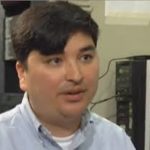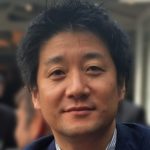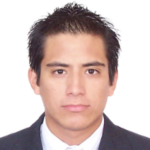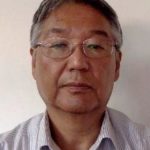Inventing the Future – Research & Development – R&D

Inventing the Future – Research & Development – R&D
Chair: CRISTIANO AKAMINE - Researcher and Professor - UNIVERSIDADE MACKENZIE/ SET
He holds a degree in Electrical Engineering from Mackenzie Presbyterian University (1999), a master's degree and a Ph.D. in Electrical Engineering from the State University of Campinas (2004/2011). He is a researcher at Mackenzie’s Digital TV Research Laboratory since 1998. He took an internship at NHK Laboratories for Research in Science and Technology (STRL) and was Visiting Specialist Professor at Unicamp's Faculty of Technology. Currently, he is a professor in Electrical Engineering and the Post-Graduate Program in Electrical and Computer Engineering (PPGEEC) of Mackenzie Presbyterian University and Coordinator of Mackenzie’s Digital TV Research Laboratory. He has a scientific grant of Productivity and Technological Development and Innovative Extension - Level 2 from National Counsel of Technological and Scientific Development (CNPq). He is also a member of the Board of the Brazilian Digital Terrestrial Television (SBTVD) Forum. He has several patents and several articles published and has experience in the area of Electrical Engineering, with emphasis on digital TV, digital communication, channel coding, embedded systems, reconfigurable logic and software defined radio.

The Trend of Broadcasting Technology -An Introduction of NHK STRL Open House 2017
Speaker: Kenichi MURAYAMA
Senior Research Engineer
Advanced Transmission Systems Research Division
Science & Technology Research Laboratories
NHK
Kenichi Murayama joined NHK (Japan Broadcasting Corporation) in 2002. From 2002 to 2008, he has worked at the NHK Engineering Administration Department / Transmission & Audience Reception Engineering Center. From 2008 to 2013, he has worked at the Advanced Transmission Systems Research Division in NHK Science and Technology Research Laboratories (STRL) and has been engaged in research and development related to next generation of digital terrestrial broadcasting.

NAB Pilot
Speaker: Skip Pizzi - Vice President, Technology Education and Outreach (NAB)
Skip Pizzi is Vice President, Technology Education and Outreach, at the National Association of Broadcasters (NAB) in Washington, DC, USA. His career has spanned the broadcast and digital media industries, working in audio engineering at NPR, and in audio production, media standards and technical policy at Microsoft. He was also an editor at Broadcast Engineeringmagazine, and a columnist for several other international industry publications. He remains a technology journalist, editor, author and trainer today. His most recent book is A Broadcast Engineering Tutorial for Non-Engineers, 4th edition, published by Focal Press. He is currently Associate Editor on the NAB Engineering Handbook, 11th edition, which will be published later this year. Skip serves as Vice-Chair of the Advanced Television Standards Committee (ATSC) Technology Group 3 (TG3), which is developing the ATSC 3.0 standard. He is also a member of the Board of Directors of the Ultra HD Forum. Skip is a graduate of Georgetown University, where he studied Electrical Engineering, International Economics and Fine Arts.

Research and Development of the Laboratory of Visual Communications of UNICAMP
Speaker: Diego Arturo Pajuelo Castro - researcher - UNICAMP
Diego Arturo Pajuelo Castro is a doctoral student at the Department of Communications (DECOM) of the Faculty of Electrical Engineering and Computation (FEEC) of the State University of Campinas (Unicamp) and works as a researcher at the Visual Communications Laboratory (LCV). He worked for a number of years at one of Peru's leading Network Operations Centers (NOC), Telefonica, which provides digital television services to the Latin American Region. Currently, his research interests are in the area of new technologies for television and multimedia systems and as part of the master's dissertation he has presented a Video Encoding Proposal for High Dynamic Range (HDR) Television System.

Research and Development of the Mackenzie Digital TV Lab
Speaker: Julio Omi – Visiting Professor at the Digital TV Laboratory - Mackenzie Presbyterian University
Graduated in electronic engineering from the Polytechnic School at USP, and has a Master’s in Engineering from the University of Tokyo. He was Engineering Manager of the Radio Department at NEC do Brasil, and took part in the ITU-R, in the TG-8/1 and WP-8F Groups handling the IMT-2000 systems, and also at CITEL. He was a member of the Brazilian delegation to the Radio Communication Conferences in 1995, 1997 and 2000. Took part in work at the Digital TV Laboratory of Mackenzie University, on the SBTVD project. He is Visiting Professor at the Digital TV Laboratory of the Mackenzie Presbyterian University.

